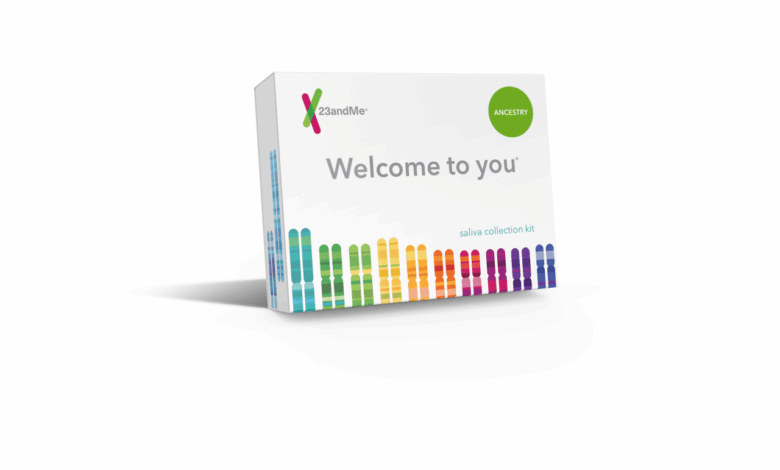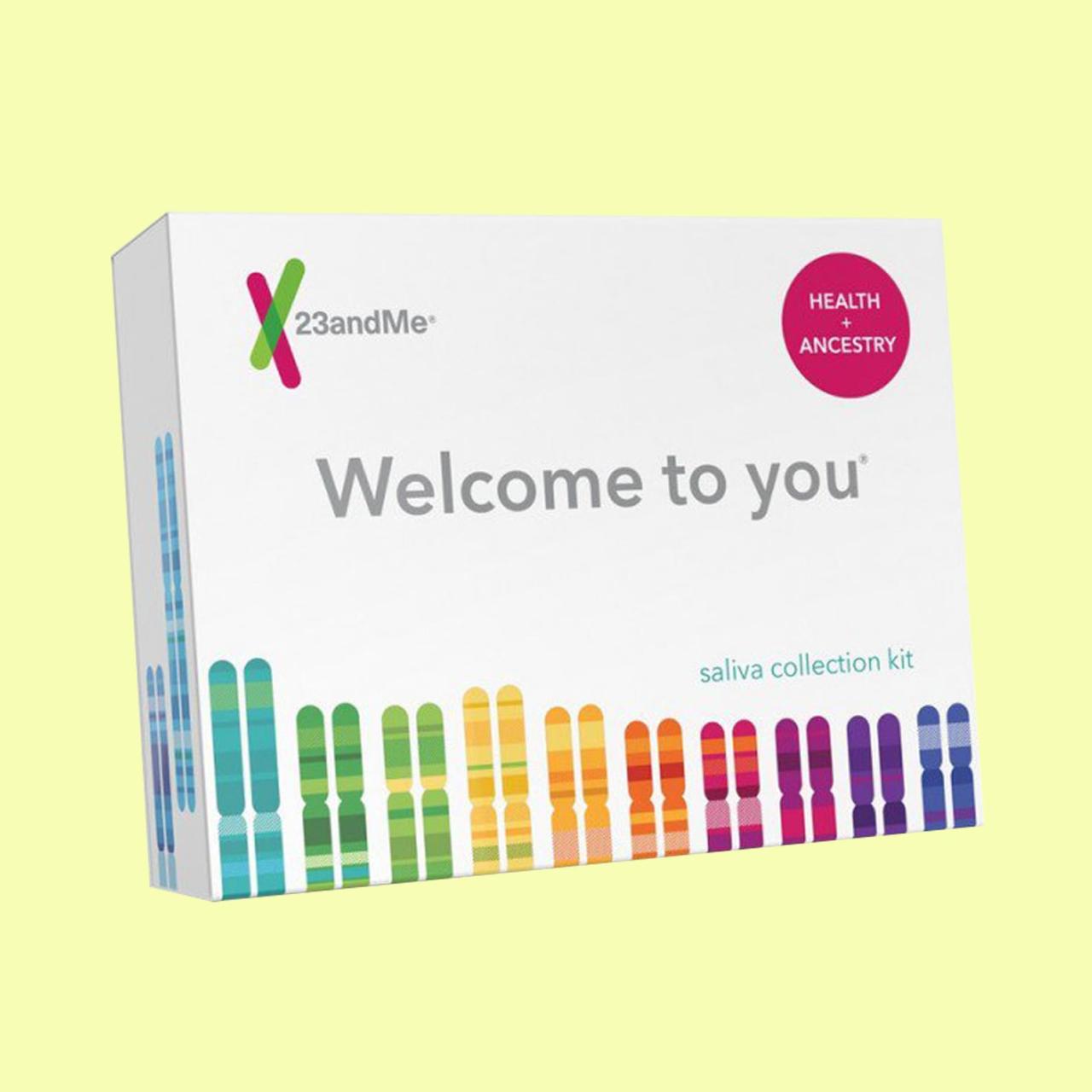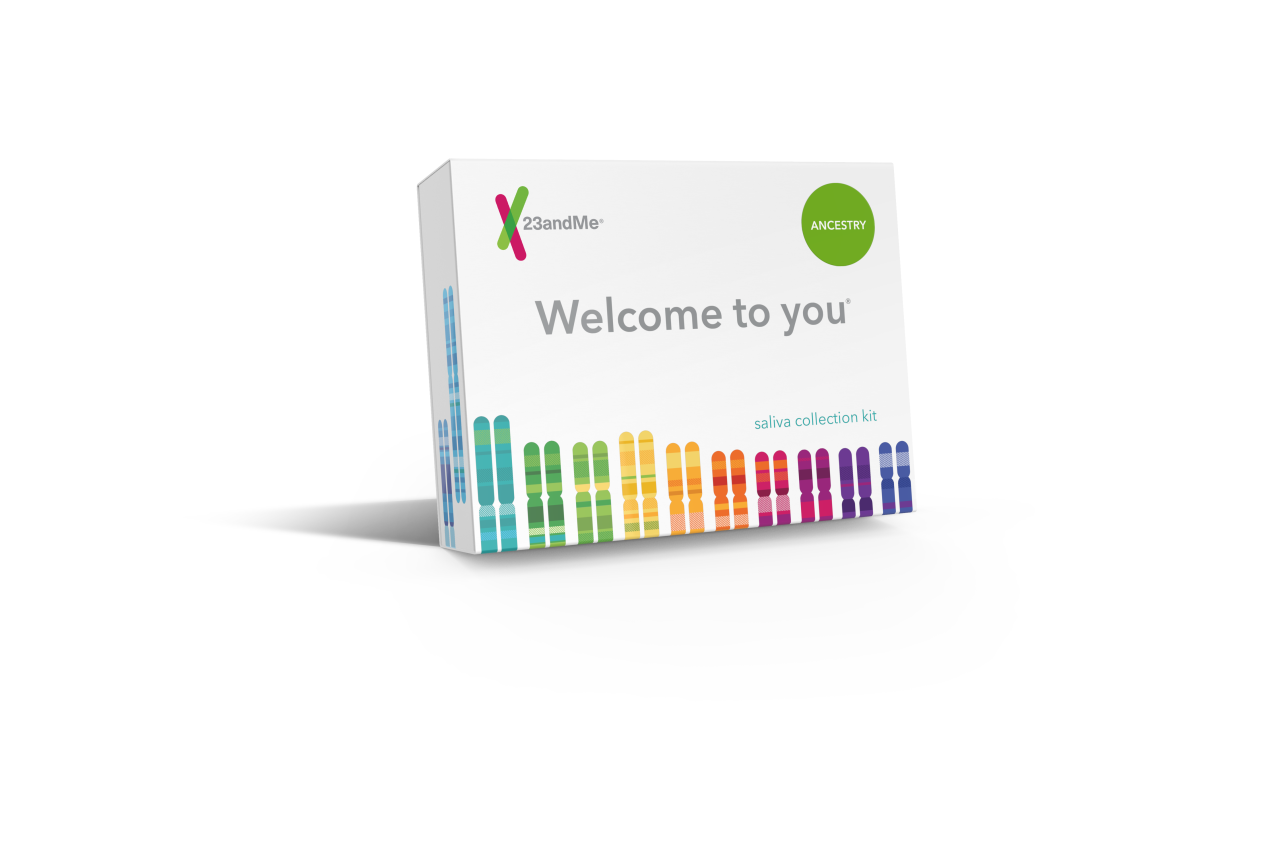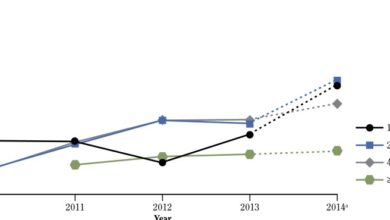
Limits of 23andMe breast cancer test are crucial to understand. This test, while offering a glimpse into genetic predispositions, doesn’t provide a complete picture of breast cancer risk. It’s essential to delve into the scientific methodology, accuracy, and limitations of this direct-to-consumer test to make informed decisions about health management.
This exploration examines the test’s accuracy in identifying individuals at risk, comparing it to established diagnostic methods. We’ll also look at how genetic predisposition interacts with lifestyle factors, the clinical significance of the findings, and the ethical considerations surrounding such tests. Understanding these aspects is vital for interpreting results and taking appropriate actions.
Accuracy and Reliability
andMe’s breast cancer risk assessment is a popular direct-to-consumer genetic test. It analyzes an individual’s DNA to identify potential genetic variations linked to an increased susceptibility to breast cancer. However, it’s crucial to understand the limitations of this test and how it compares to established diagnostic methods. This section delves into the scientific basis, known limitations, and factors affecting the reliability of 23andMe’s breast cancer test.The scientific methodology behind 23andMe’s breast cancer test involves analyzing a person’s DNA for specific genetic variants associated with breast cancer risk.
The test identifies single nucleotide polymorphisms (SNPs) and other genetic markers that have been linked to increased susceptibility. While the test focuses on known risk factors, it’s essential to recognize that numerous genes and environmental factors play a role in breast cancer development.
Scientific Methodology of 23andMe’s Breast Cancer Test
The test analyzes a person’s DNA for specific genetic variations linked to an increased susceptibility to breast cancer. It identifies single nucleotide polymorphisms (SNPs) and other genetic markers associated with known risk factors. However, the test does not provide a definitive diagnosis of breast cancer. The results should be interpreted in the context of an individual’s family history, lifestyle, and other risk factors.
Limitations of Accuracy in Identifying Breast Cancer Risk
andMe’s breast cancer test has limitations in accurately identifying individuals at risk. The test’s predictive power is influenced by several factors, including the limited number of genetic variants currently analyzed, and the complex interplay of genes and environmental factors. The test results should be viewed as one piece of information in a broader risk assessment. Further testing and consultation with healthcare professionals are often necessary.
Comparison to Other Diagnostic Methods
Compared to other established diagnostic methods, such as mammograms and clinical breast exams, 23andMe’s breast cancer test serves a different purpose. These established methods are used to detect existing breast cancer, while 23andMe’s test aims to identify individuals who may be at an increased risk of developing breast cancer in the future. The accuracy of 23andMe’s test is not as high as the diagnostic accuracy of established medical procedures.
Factors Affecting Reliability, Limits of 23andme breast cancer test
Several factors might affect the reliability of 23andMe’s breast cancer test. Genetic variations beyond those currently analyzed in the test, as well as lifestyle choices (such as diet, exercise, and alcohol consumption), can influence an individual’s overall risk. Furthermore, the test’s interpretation relies on population-based data, which might not perfectly reflect an individual’s unique genetic makeup or environment.
Table Comparing Sensitivity and Specificity
| Diagnostic Method | Sensitivity | Specificity |
|---|---|---|
| 23andMe Breast Cancer Test | Variable (depending on the specific variant and population) | Variable (depending on the specific variant and population) |
| Mammogram | High | High |
| Clinical Breast Exam | Moderate | High |
Note: Sensitivity and specificity values for 23andMe’s test are not standardized and vary based on the specific genetic variants analyzed and the population being tested.
While 23andMe’s breast cancer test can offer some insights, it’s crucial to remember its limitations. It doesn’t predict every risk factor, and it’s important to remember that lifestyle choices can significantly impact health outcomes. For instance, research suggests that coffee might protect your liver , highlighting how diet and habits play a role. Ultimately, a 23andMe result should be just one piece of the puzzle, not the definitive answer, when considering breast cancer risk.
Role of Population-Based Data
The accuracy of 23andMe’s breast cancer test is influenced by the population-based data used to develop the test. The accuracy of the test may vary for different ethnicities and populations due to the genetic diversity among populations. For example, the prevalence of specific genetic variants may differ across ethnic groups, impacting the test’s accuracy in those groups. This limitation necessitates caution when interpreting results for individuals from diverse backgrounds.
Genetic Predisposition vs. Lifestyle Factors

Understanding breast cancer risk involves a complex interplay of genetic predisposition and lifestyle choices. While genetic testing, like 23andMe’s breast cancer test, can identify certain gene mutations linked to a higher risk, it’s crucial to remember that these are only part of the equation. A holistic approach that considers both genetic factors and lifestyle choices provides a more comprehensive picture of individual breast cancer risk.andMe’s breast cancer test assesses genetic predisposition by examining specific genes, such as BRCA1 and BRCA2, known to significantly increase the risk of developing breast cancer.
The test identifies single nucleotide polymorphisms (SNPs) within these genes. Variations in these genetic markers can influence the body’s ability to repair DNA damage, increasing the likelihood of uncontrolled cell growth, which is a hallmark of cancer. Results from these tests often provide a probability of developing breast cancer over a lifetime, rather than a definite diagnosis.
Assessing Genetic Predisposition for Breast Cancer Risk
andMe’s test provides insights into the genetic variants associated with breast cancer risk. It’s important to note that possessing these genetic variations doesn’t guarantee the development of the disease. Other factors, like lifestyle choices and environmental exposures, play a crucial role in shaping the final outcome. The test’s output should be interpreted cautiously, in conjunction with other risk assessment tools and a physician’s guidance.
While 23andMe’s breast cancer test can offer some insights, it’s crucial to remember its limitations. It’s not a definitive predictor of your risk, and understanding your family history and lifestyle factors is just as important. For instance, exploring the impact of marijuana on fertility might offer a different perspective on health risks, and if you’re curious to learn more, check out this helpful article on 5 things to know about fertility and marijuana.
Ultimately, these tests should be seen as one piece of the puzzle, not the complete picture when it comes to assessing breast cancer risk.
Limitations of Relying Solely on Genetic Information
Relying solely on genetic information for breast cancer risk assessment is incomplete. Genetic predisposition is just one piece of the puzzle. Environmental factors, lifestyle choices, and even chance all contribute to the complex process of disease development. A person with a high genetic risk might never develop breast cancer due to healthy lifestyle choices, while another with a lower genetic risk might develop the disease due to poor lifestyle habits.
This underscores the need for a more comprehensive approach to risk assessment.
Comparison of Genetic and Lifestyle Factors
Genetic predisposition provides a baseline risk, indicating an individual’s inherent susceptibility. Lifestyle factors, however, represent modifiable elements that can either amplify or mitigate this risk. A diet rich in processed foods, lack of physical activity, and excessive alcohol consumption, for example, can increase the risk of breast cancer. Conversely, a balanced diet, regular exercise, and maintaining a healthy weight can help reduce the risk, regardless of genetic predispositions.
Importance of Lifestyle Factors in Breast Cancer Prevention
A proactive approach to lifestyle choices is essential for breast cancer prevention, regardless of genetic predisposition. These choices can impact the overall health of the body and indirectly influence breast cancer risk.
- Maintaining a healthy weight: Obesity significantly increases breast cancer risk, especially in postmenopausal women. Weight management through diet and exercise is crucial.
- Adopting a balanced diet: A diet rich in fruits, vegetables, and whole grains is associated with a lower risk. Limiting processed foods, red meat, and excessive sugar intake is important.
- Regular physical activity: Exercise has numerous health benefits, including reducing breast cancer risk. Aim for at least 150 minutes of moderate-intensity aerobic activity per week.
- Limiting alcohol consumption: Excessive alcohol intake is a known risk factor for several types of cancer, including breast cancer. Limiting alcohol consumption or abstaining altogether is a wise choice.
- Avoiding smoking: Smoking is a significant risk factor for various cancers. Quitting smoking can substantially improve overall health and reduce cancer risk.
Relative Contribution of Genetic and Lifestyle Factors
The relative contribution of genetic and lifestyle factors to breast cancer risk is not easily quantified. It varies significantly among individuals and depends on the specific genetic predispositions and lifestyle choices.
| Factor | Relative Contribution | Explanation |
|---|---|---|
| Genetic Predisposition | Moderate to High | Certain gene mutations, like BRCA1/2, substantially increase the risk of breast cancer. |
| Lifestyle Factors | Moderate to High | Diet, exercise, weight, alcohol consumption, and smoking habits can significantly influence the risk. |
A balanced approach that incorporates both genetic testing and lifestyle modifications is crucial for comprehensive breast cancer risk assessment and prevention.
Clinical Significance and Interpretation
Unveiling your genetic predispositions to breast cancer can be a powerful tool for proactive health management, but understanding its limitations and implications is crucial. 23andMe’s breast cancer risk assessment provides insights into potential genetic factors, but interpreting these results requires careful consideration of individual medical history and lifestyle choices. This is not a definitive diagnosis, but a starting point for informed conversations with healthcare professionals.Interpreting genetic predispositions for breast cancer risk alone is insufficient.
A comprehensive understanding of the interplay between genetics, lifestyle, and environmental factors is vital for accurate risk assessment and personalized preventive strategies. The 23andMe test can identify potential genetic variations linked to breast cancer susceptibility, but it doesn’t predict the certainty of developing the disease. Furthermore, other factors like family history, diet, exercise, and overall health contribute significantly to the risk.
Clinical Significance of 23andMe’s Findings
andMe’s breast cancer risk reports provide insights into genetic variations associated with increased susceptibility. However, these results should be interpreted cautiously, acknowledging that a positive result does not guarantee disease development. The clinical significance lies in its ability to alert individuals to potential risks, prompting them to discuss proactive measures with their doctors. For example, individuals with a genetic predisposition may choose to undergo more frequent mammograms or consider other preventative strategies.
Limitations of Interpreting Genetic Predispositions
Interpreting genetic predispositions for breast cancer risk alone is insufficient. It is essential to acknowledge the significant influence of environmental and lifestyle factors on disease development. The test results should not be used to make critical health decisions in isolation. A comprehensive assessment involving clinical evaluation, family history, and lifestyle factors is crucial.
Interpreting Results Within Medical History
Genetic results from 23andMe should be integrated with an individual’s complete medical history. A thorough examination of family history, including breast cancer diagnoses in relatives, age of diagnosis, and treatment approaches, provides a valuable context for understanding the overall risk profile. For instance, a strong family history of breast cancer, even without a specific genetic variant identified by 23andMe, might indicate a higher risk.
This should be discussed with a healthcare professional to establish an individualized risk assessment.
Steps After Receiving 23andMe Results
After receiving 23andMe results, it’s essential to schedule a consultation with a healthcare professional. This consultation should cover a detailed discussion of the results, including the specific genetic variations identified and their implications for breast cancer risk. A healthcare professional can provide guidance on preventive measures, recommend additional screenings, and explain the overall significance of the findings within the context of individual health history.
Importance of Consulting Healthcare Professionals
Consulting with a healthcare professional is paramount after receiving 23andMe results. They can provide personalized interpretations, integrate the genetic information with medical history, and recommend appropriate preventative measures or further testing. They can also address any anxieties or concerns about the results. This step is crucial to avoid misinterpretations and ensure the results are used effectively for informed decision-making.
Potential Misinterpretations and Understandings
- Misinterpreting a positive result as a guaranteed diagnosis. Positive results indicate an increased susceptibility, not a definitive diagnosis.
- Ignoring lifestyle factors. Genetic predispositions do not negate the influence of lifestyle choices on breast cancer risk. Healthy lifestyle choices are important for all individuals.
- Neglecting family history. Family history significantly contributes to breast cancer risk assessment, and this should be considered alongside genetic test results.
- Making significant health decisions based solely on the test results. The 23andMe test should be used as a tool to inform conversations with a healthcare professional, not as a standalone determinant of health decisions.
- Failing to discuss results with a healthcare professional. Professional interpretation is essential to avoid misinterpretations and ensure appropriate preventive measures.
Ethical Considerations

Direct-to-consumer genetic testing, like 23andMe’s breast cancer risk assessment, raises complex ethical concerns. The potential for misuse of genetic information, coupled with limitations in understanding and interpreting results, demands careful consideration. The ease of access to these tests necessitates a thorough evaluation of the ethical implications surrounding privacy, discrimination, and psychological impact.
Potential for Discrimination
The availability of genetic information about breast cancer risk carries the significant risk of discrimination. Insurers could potentially use this information to deny coverage or charge higher premiums to individuals with predispositions. Employers might use genetic data to make hiring or promotion decisions, leading to unfair biases. Furthermore, access to housing or employment could be compromised due to genetic profiling.
This risk of discrimination underscores the importance of robust legal protections and regulations to safeguard against such practices.
Importance of Genetic Counseling
Genetic counseling plays a crucial role in navigating the complex information provided by 23andMe’s breast cancer test. A qualified genetic counselor can help individuals understand their results within the context of their family history and personal lifestyle. They can provide support and guidance in making informed decisions about preventative measures, such as lifestyle changes or medical interventions. The counselor’s expertise in interpreting complex genetic data is vital for a personalized approach to managing breast cancer risk.
They can also help individuals to cope with the emotional and psychological aspects of receiving genetic test results.
Limitations of Privacy Protections
While 23andMe and other companies strive to protect user data, the limitations of privacy protections for genetic information are significant. Data breaches, unauthorized access, and potential misuse of information are all possible risks. Furthermore, the evolving nature of genetic research and data analysis techniques may reveal new uses for the data that were not initially anticipated or protected against.
This necessitates ongoing vigilance and the development of robust, adaptive policies to address evolving privacy challenges.
While 23andMe’s breast cancer test can offer some insights, it’s crucial to remember its limitations. It’s not a definitive predictor, and focusing on proactive steps like prenatal care is equally important. Finding the right prenatal yoga routine can be beneficial for both physical and mental well-being during pregnancy, and checking out some of the best pregnancy yoga videos best pregnancy yoga videos can be a great resource.
Ultimately, understanding the limitations of genetic testing tools like 23andMe is key to making informed decisions about your health.
Potential for Psychological Distress
Receiving a genetic predisposition for breast cancer can induce significant psychological distress. The uncertainty surrounding future health risks, the emotional burden of potential diagnoses, and the pressure to make difficult decisions can lead to anxiety, fear, and depression. Individuals should be prepared for the emotional impact of genetic testing and should have access to support resources, such as counseling or support groups.
Comprehensive psychological support is crucial in helping individuals cope with the potential emotional and psychological consequences of these tests.
Summary of Ethical Concerns
| Ethical Concern | Explanation |
|---|---|
| Potential for Discrimination | Genetic information could be misused by insurers, employers, or others to discriminate against individuals with predispositions. |
| Importance of Genetic Counseling | Genetic counselors are essential for interpreting results and providing personalized guidance. |
| Limitations of Privacy Protections | Data breaches, unauthorized access, and evolving uses of genetic information are significant privacy concerns. |
| Potential for Psychological Distress | Receiving a genetic predisposition can induce anxiety, fear, and depression. |
Test Limitations and Alternatives
While 23andMe’s breast cancer risk assessment tools can provide valuable insights, it’s crucial to understand their limitations and explore alternative methods for a more comprehensive understanding of individual risk. These tests should not be seen as the sole determinant of future health outcomes, but rather as one piece of the puzzle. A personalized approach to risk assessment, incorporating various factors, is essential for informed decision-making.A critical aspect of understanding 23andMe’s breast cancer test is recognizing its limitations in predicting future health outcomes.
While the test can identify genetic predispositions, it cannot predict the precise timing or severity of disease development. Environmental factors, lifestyle choices, and other genetic variations significantly influence a person’s overall risk.
Limitations of 23andMe’s Breast Cancer Test
andMe’s breast cancer risk assessment primarily focuses on specific genetic variations associated with increased susceptibility. However, it doesn’t consider the intricate interplay of environmental factors and lifestyle choices that play a substantial role in breast cancer development. Moreover, the test’s predictive power is limited by the incomplete understanding of the complex genetic and environmental interactions contributing to breast cancer.
For instance, a person might carry a genetic variant associated with increased risk, but never develop breast cancer due to protective lifestyle choices. Conversely, an individual without a detected genetic variant might still develop breast cancer due to other risk factors.
Alternative Methods for Assessing Breast Cancer Risk
Several alternative methods exist for assessing breast cancer risk beyond genetic predispositions. These methods provide a more holistic approach to risk evaluation, incorporating a range of factors influencing a person’s likelihood of developing the disease.
Methods Used in Breast Cancer Risk Assessment
- Clinical History and Family History: A thorough medical history, including personal and family histories of breast cancer, is crucial. This includes details about age of onset, type of breast cancer, and family members affected. For example, a strong family history of breast cancer at a young age significantly increases an individual’s risk.
- Lifestyle Factors: Lifestyle choices like diet, exercise, and alcohol consumption are strongly correlated with breast cancer risk. A healthy lifestyle, including regular exercise and a balanced diet, can help mitigate risk factors.
- Physical Examination: Regular breast exams, both self-exams and professional exams, can help detect potential abnormalities early. Early detection is crucial for successful treatment.
- Mammography: Mammograms are imaging tests used to detect breast abnormalities. They are an essential tool for early detection, particularly for women at higher risk.
- Genetic Counseling and Testing: Genetic counseling can provide individuals with information about their genetic risk and options for further testing. This can involve testing for specific genes like BRCA1 and BRCA2, which are strongly associated with breast cancer susceptibility.
Cost-Effectiveness of 23andMe’s Breast Cancer Test
Comparing the cost-effectiveness of 23andMe’s breast cancer test to other methods is essential. The cost of the 23andMe test is relatively low compared to some genetic testing options. However, the value of the information provided must be weighed against the costs of follow-up consultations and additional diagnostic procedures. Alternative methods, such as clinical history and lifestyle assessments, are often more cost-effective in the short term.
Potential for False Positives and False Negatives
Like any diagnostic tool, 23andMe’s breast cancer test is susceptible to false positives and false negatives. A false positive might lead to unnecessary anxiety and additional testing, while a false negative might mask a true risk. The interpretation of test results should always be done in consultation with a healthcare professional.
Resources for Additional Information
- National Breast Cancer Foundation: Provides information on breast cancer risk factors, prevention, and early detection.
- American Cancer Society: Offers comprehensive resources on breast cancer, including risk assessment tools and support services.
- Mayo Clinic: Provides detailed information on breast cancer risk factors, diagnosis, and treatment options.
- National Institutes of Health (NIH): Offers extensive research and information on various health conditions, including breast cancer.
Data and Research
The quest to understand breast cancer, its genetic underpinnings, and the efficacy of predictive testing like 23andMe’s offering relies heavily on the quality and scope of the available data. This data, in turn, shapes the accuracy and reliability of the test itself. Understanding the limitations of this data, both past and present, is crucial to appreciating the potential and the pitfalls of genetic testing for breast cancer risk.Current research on breast cancer genetics, while significant, faces inherent limitations.
The complexity of the human genome, the interplay of multiple genes, and the influence of environmental factors create a challenging landscape for researchers. Furthermore, the diversity of human populations and the variable manifestation of breast cancer within these populations must be considered.
Limitations of Data Used to Develop 23andMe’s Breast Cancer Test
The dataset used to develop 23andMe’s breast cancer test, like many genetic tests, is a collection of diverse individuals. However, inherent biases within this data can potentially impact the accuracy of the results. For instance, the representation of different ethnicities may not be fully balanced, and the specific subtypes of breast cancer may not be equally represented, leading to potential inaccuracies in risk assessment for specific groups.
Furthermore, the timeframe of data collection may not capture the full spectrum of genetic mutations that might emerge over time.
Limitations of Current Breast Cancer Genetics Research
Current research on breast cancer genetics faces challenges in fully elucidating the intricate relationships between genes, lifestyle factors, and the development of the disease. Epigenetic modifications, environmental exposures, and complex gene-gene interactions are not always adequately addressed. Also, long-term follow-up studies are necessary to fully understand the impact of genetic predispositions on breast cancer risk over a lifetime.
Ongoing Research and Development Efforts
Ongoing research and development efforts in breast cancer genetics aim to address these limitations. Researchers are focusing on larger, more diverse datasets to better understand the genetic factors involved in various breast cancer subtypes. Multi-institutional collaborations and meta-analyses are becoming increasingly common to synthesize data from different sources. New technologies, such as next-generation sequencing, are providing more comprehensive insights into the human genome and its role in breast cancer.
For example, studies are investigating the influence of specific genetic variants in combination with environmental factors.
Validation of 23andMe’s Breast Cancer Test Results
Validation of 23andMe’s breast cancer test results is crucial. This typically involves comparing the test results to the patient’s medical history, family history, and, importantly, clinical outcomes. The use of large, well-defined cohorts of individuals, with detailed clinical information, is paramount. Independent validation studies from various research groups further enhance the reliability of the test.
Potential Impact of Future Research
Future research has the potential to significantly impact 23andMe’s breast cancer test. Improved understanding of complex gene-gene interactions, epigenetic modifications, and environmental influences could lead to more refined risk assessment tools. Furthermore, discoveries of novel genetic markers associated with breast cancer risk could enhance the test’s accuracy and precision.
Timeline for Advancement of Breast Cancer Testing
A timeline for advancement in breast cancer testing is challenging to precisely define due to the multifaceted nature of the research. However, a general progression can be observed. Early genetic markers were identified decades ago. In recent years, there has been a surge in research focused on understanding complex interactions. Ongoing efforts are focused on improving the predictive capabilities of tests, and the integration of lifestyle factors and environmental exposures into risk assessment.
Further research into rare variants and the development of more personalized treatment strategies are expected to continue to drive advancements in the field. Predicting the exact timeline for significant breakthroughs remains difficult, but ongoing research promises continuous refinement and improvement in breast cancer testing.
Conclusion: Limits Of 23andme Breast Cancer Test
In conclusion, while 23andMe’s breast cancer test can offer some insights, it’s essential to acknowledge its limitations. The test is not a definitive diagnosis, and its results should always be interpreted in conjunction with a healthcare professional’s advice. Understanding the interplay of genetics, lifestyle, and other factors is key to a comprehensive approach to breast cancer risk assessment.
This analysis highlights the need for a balanced perspective when utilizing such tools and underscores the critical role of professional medical guidance.





